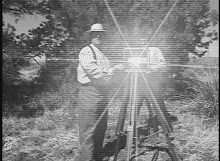The Heliotropic Effect of Abundance
The following is an essay extract from a much larger symposium document Explaining Extraordinary Organizational Performance and Transformation: Lessons from Rocky Flats. The Heliotropic Effect of Abundance is by Dr. Kim Cameron a co-founder of The Center for Positive Organizational Scholarship.
Positive Organizational Scholarship is a relatively new field of study. It looks at organizations in the way positive psychology looks at individuals. “Just as positive psychology focuses on exploring optimal individual psychological states rather than pathological ones, Positive Organizational Scholarship focuses attention on optimal organizational states—the dynamics in organizations that lead to the development of human strength, foster resiliency in employees, make healing, restoration, and reconciliation possible, and cultivate extraordinary individual and organizational performance”.
EXTRACT
To explain the heliotropic effect, let us pose the question: What happens over time when you put a plant in a window? The answer, of course, is that the plant begins to lean toward the light. That is, a natural tendency exists in every living system to be inclined toward positive energy—toward light—and away from negative energy or from the dark. The reason is that light is life giving and energy creating. All living systems are inclined toward that which gives life.
The heliotropic effect is evident in many ways within individuals and organizations—physiologically, psychologically, emotionally, visually, socially, and so forth (see Cooperrider, 1990; Cameron, 2003; Bright, Cameron, & Caza, 2006). At the individual level, the heliotropic effect may be manifest physiologically as the placebo effect. That is, if a person believes that a medication will be effective, it will, in fact, produce the desired effect about 60 percent of the time. Psychologically, the heliotropic effect is manifest as the Pygmalion effect. That is, not only does my system respond to my own positive expectations, but the expectations of others also can produce a heliotropic effect for me. The essence of this effect is that the perception of a teacher appears to affect the performance outcome of the class. If thinks that learners are bright, they are. Those expectations are more powerful than any other single factor, including actual IQ scores (Rosenthal & Jacobsen, 1968) on performance.
